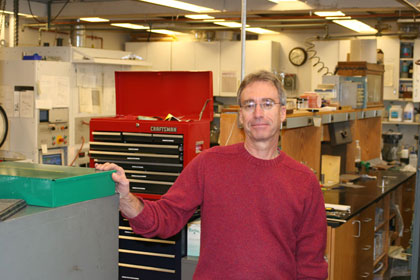
William B. Durham/EAPS/MIT
 |
Current research programs |
"Laboratory Study of the Effects of Impurities on the Flow and Fracture of Icy Materials on Mars," 2011-2014, NASA [See proposal summary] "Rheological Properties of Earth’s Upper Mantle at High Pressure: Roles of Melt, Water and Pressure," 2012-2015 (pending), Office of Science, Basic Energy Sciences, DOE [See proposal summary] "Rheological behavior of icy mixtures with application to the outer planets," 2013-2016, NASA [See proposal summary] |